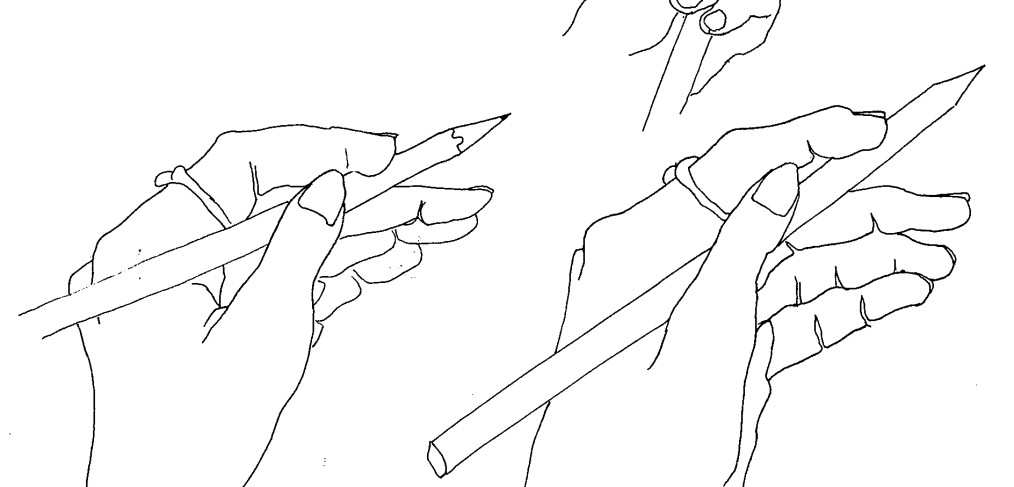
Dirty Little Hand (and a show of hands)
Authors: Sara Camponez, Angela Meireles, Hugo Sobrosa, Kesia Lima, Madalena Vidigal, Raul Augiar
Students know a lot of things, although loose, unconnected. The important thing is to know how to relate things[1].
Fernando Távora
The first time we met her was on the first year of Architecture. By that time she was really shy but she slowly lost her restraints and, soon enough, she fearlessly started touching, scratching, ripping, smudging… She is now an accomplished dirty little hand.
The first thing she was asked to do was to play a game on this 50×50 centimetre board. She was asked, ever so simply, to build a city out of this white, regular, boring mass of Styrofoam. Lacking any kind of functionality and meaning, the damn thing seamed as cold and hard as rock. And as if it was rock indeed, the little inexperienced hand had to dig.
If I observe the plan of a city, I imagine it. But if I observe the photo of the same city, I see it. The plan is abstract and the photo is concrete[2].
Luiz Martinez Santa-Maria

The beginning | works by Leonor Reis, Jair Anjos, Sebastião Rebolo, Maria Trindade, Rita Gonçalves and Joana Mariano
© Author
After this month, she had already what seamed to be a city, with axes, squares and order. The hand had created some kind of scaled, abstract reality in the anonymous mass.

The city | works by Leonor Reis, Jair Anjos, Sebastião Rebolo, Maria Trindade, Rita Gonçalves and Joana Mariano
© Author
The next step was to position a 5×5 meter cube in one of the squares (or a 5×5 centimetre cube, or even a 1×1 centimetre cube, depending on the scale). She was invited to start exploring another scale of her own abstraction. This time she realised she had not only the exterior of the white volumes but also the interior reality of the cube to work with (then, later in the year, this white mass would become a wall).
The hand started to realise that these realities existed in the realm of other bigger realities.
At the same time that this renewed excavating process took place, the hand begun to develop this weird curiosity for pictures. She might take a cheap pen or a whimsical coloured pencil and furiously try to draw something she couldn’t see (all too often, herself walking down a Styrofoam street). Slowly, she started to descend from her sky view – just as if she was a little bird – and set foot on the newly built ground of the city.
This new acquired method of drawing made it easier for the hand to decide where and how to excavate the white mass. She learnt that, by letting herself flow freely, she was able to attain a sort of fresh plasticity in her drawings that lead her to better solutions.
[…] in the ecstasy of work, the draughtsman forgets both his hand and the pencil, and the image emerges as if it were an automatic projection of the imaging mind. Or, perhaps, it is the hand that really imagines as it exists in the flesh of the world, the reality of space, matter and time, the very physical condition of the imagined object[3].
Juhani Pallasma
This also made possible for her to picture little people in this apparently empty model. With them, the scale of the “buildings” and “blocks” became more visible. And so, a crowd appeared: some people sunbathing in there, others protecting themselves in the shade of a narrow street, others even resting their feet by the water.
Sometimes the little hand would go out to Porto and spend several hours drawing the city in front of her (by force, if needed), this time with real people walking around. She’d get wet, sunburnt or even frostbitten at times, but no situation seamed harsh enough to prevent the hand from going out and drawing, swinging between abstraction and reality, and vice-versa.

The drawings | works by Ana Cavaco, Carolina Guerra, Julia Gonçalves, Raquel Matos, Ricardo Rodrigues, Rute Queiroz, Saskia Weber and Tomás Neves.
She started taking pleasure in going out for a walk and registering things she would see. It was as if she was discovering things through the lines on the paper: little bits of history hidden in details she would observe. These small walks turned into bigger walks and, in time, into full trips around the globe, organized with the purpose of finding out secrets about these far away places she’d visit and, of course, carefully capturing them for later use in her creations.
To draw, it’s also to invent and create. The inventive phenomena will only occur after the observation[4].
Le Corbusier
After a while, people started to see the little hand wrapped around a few little notebooks (there was an obvious preference for the black cover ones). Some say she’d scratch things in them all the time: notes, ideas, things she saw, things she didn’t see, thoughts she couldn’t say… a true grownup relationship.
From the hand’s pleasure in experiencing different aspects of reality through all of her five senses, small things called “projects” started to appear. In time, the hand embraced all these techniques, lost her fear in experimenting things and learned a little bit (just a little bit) about creating. And so she went: turning, drawing, cutting, breaking, reversing… by trying to position herself in the context of things, this dirty little hand would turn reality into abstraction and abstraction into reality, until masses became walls.
[4] CORBUSIER, Le: Le Dessin Comme Outil / com. Danièle Pauly. – Fage ed., Lyon, 2006.
[3] PALLASMA, Juhani: The Thinking Hand – existential and embodied wisdom in architecture, John Wiley & Sons, Chichester, 1982.
[2] SANTA-MARIA, Luis Martinez: Intersecciones, Rueda, Madrid, 2004.
[1] (free translation) ARIS, Carlos Marti: Nulla dies sine linea: Fragmentos de una conversación con Fernando Távora, 1998.








